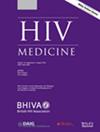Impact of mental health service use on the HIV care cascade among women
Abstract
Background
While the negative effects of mental health issues on HIV clinical outcomes have been well-documented, the impact of mental health treatment on the HIV care cascade is largely uncharacterized. The objective of this study was to describe the engagement of women with mental health conditions and symptoms, who reported using mental health services, across the HIV care cascade and to assess the relationship between mental health service use and HIV care steps.
Methods
Longitudinal data were analysed from participants enrolled in the Canadian HIV Women's Sexual and Reproductive Health Cohort Study (CHIWOS) (2013–2018) who had clinically significant depressive symptoms or reported a mental health diagnosis at baseline. Among this subset, four states of HIV care were defined at baseline, 18 months and 36 months: (1) unengaged in care (did not visit an HIV provider in the past year), (2) not on antiretroviral therapy (ART) (visited an HIV provider in the past year but did not report current ART use), (3) detectable (reported current ART use but a detectable viral load) and (4) optimal (reported current ART use and an undetectable viral load). Sankey diagrams were used to illustrate the engagement of women across the HIV care cascade over 3 years based on their self-reported use of mental health services at baseline. The association between mental health service use and care state at baseline was analysed using multinomial logistic regression models.
Results
Of the 898 women in the cohort with significant depressive symptoms or mental health conditions at baseline, 3.8% (n = 34) were unengaged in care, 10.9% (n = 98) were not on ART, 12.4% (n = 111) were detectable and 72.9% (n = 655) were optimal. Over the 36 months, 51.0% of women transitioned between states at least once. When stratified by service use, women who reported use of mental health services at baseline had better engagement across the care cascade and had fewer transitions between states over the 3 years, 37.2% of which were to better states of care. The use of mental health services at baseline was also significantly associated with greater odds of engagement in the optimal state compared with not on ART (adjusted odds ratio [aOR]: 1.72, 95% confidence interval [CI]: 1.07–2.77). A similar but statistically insignificant association was found with the detectable care state (aOR: 1.67, 95% CI: 0.92–3.03).
Conclusions
Our findings demonstrate that linkage to mental health care has a positive impact on HIV care outcomes among women. Accessible mental health services may serve to improve both mental well-being and progression of these patients along the HIV care cascade, thereby achieving individual and public health goals.


 求助内容:
求助内容: 应助结果提醒方式:
应助结果提醒方式:


